|
Books Should Be Free Loyal Books Free Public Domain Audiobooks & eBook Downloads |
|
|
Books Should Be Free Loyal Books Free Public Domain Audiobooks & eBook Downloads |
|
Biographies |
|---|
|
Book type:
Sort by:
View by:
|
By: Allan Pinkerton (1819-1884) | |
|---|---|
 The Expressman and the Detective
The Expressman and the Detective
Allan Pinkerton (1819-1884), a Scotsman by birth and a barrel-maker by trade, settled in Chicago in its infancy and founded the Pinkertons, the world's first detective agency. Though events associated with the agency after his death have tarnished the name, Pinkerton himself was one of the original human rights advocates. He was a dear friend to John Brown, an advisor to Abraham Lincoln, and 80 years ahead of his time in hiring female detectives. He was also stubborn, irascible, and an egomaniac... | |
By: Amy Steedman | |
|---|---|
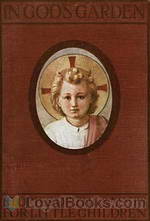 In God's Garden
In God's Garden
“In this book you will not find the stories of all God’s saints. I have gathered a few together, just as one gathers a little posy from a garden full of roses. But the stories I have chosen to tell are those that I hope children will love best to hear.” (excerpt from In God’s Garden by Amy Steedman) | |
 Knights of Art - Stories of the Italian Painters
Knights of Art - Stories of the Italian Painters
A children's version of the Lives of Artists by Vassari with many Illustrations. Of course we won't be able to show the paintings but the descriptions and the anecdotes are interesting and may lead a child to further interest. | |
By: André Gide (1869-1951) | |
|---|---|
 Oscar Wilde: A Study
Oscar Wilde: A Study
This is a 1905 memoir of one great litterateur’s latter days written by another great litterateur. This recording omits the numerous footnotes and two letters in French untranslated by the translator. -Summary by david wales | |
By: Andrew Carnegie (1835-1919) | |
|---|---|
 James Watt
James Watt
This biography of the inventor James Watt covers his early years, successes and failures, and legacy. | |
 Autobiography of Andrew Carnegie
Autobiography of Andrew Carnegie
This autobiography of Andrew Carnegie is a very well written and interesting history of one of the most wealthy men in the United states. He was born in Scotland in 1835 and emigrated to America in 1848. Among his many accomplishments and philanthropic works, he was an author, having written, besides this autobiography, Triumphant Democracy (1886; rev. ed. 1893), The Gospel of Wealth, a collection of essays (1900), The Empire of Business (1902), and Problems of To-day (1908)]. Although this autobiography was written in 1919, it was published posthumously in 1920. | |
By: Andrew Lang (1844-1912) | |
|---|---|
 Story of Joan of Arc
Story of Joan of Arc
Joan of Arc is a folk heroine of France and a Roman Catholic saint. Claiming divine guidance, she led the French army to several important victories during the Hundred Years' War, which paved the way for the coronation of Charles VII of France. Captured by her enemies, she was sold to the English and put on trial for charges of "insubordination and heterodoxy". She was burned at the stake for heresy when she was 19 years old. Twenty-five years after her execution, an inquisitorial court examined the trial, pronounced her innocent, and declared her a martyr... | |
By: Anges Strickland, Elisabeth Strickland (1796-1874) | |
|---|---|
 The Lives of the Queens of England
The Lives of the Queens of England
The Lives of the Queens of England is a multi-volumed work attributed to Agnes Strickland, though it was mostly researched and written by her sister Elizabeth. These volumes give biographies of the queens of England from the Norman Conquest in 1066. Although by today's standards, it is not seen as a very scholarly work, the Stricklands used many sources that had not been used before.Volume one includes the biographies of Matilda of Flanders, Matilda of Scotland, Adelicia of Louvaine, Matilda of Boulogne and Eleanora of Aquitaine.(Introduction by Ann Boulais) | |
By: Anne MacLanahan Grenfell (1885-1938) | |
|---|---|
 Le Petit Nord
Le Petit Nord
A collection of letters from Anne (MacLanahan) Grenfell, future wife of Sir Wilfred Grenfell, regarding her year of missionary service at the orphanage in St. Anthony, Newfoundland and Labrador, Canada. | |
By: Annie Besant (1847-1933) | |
|---|---|
 Annie Besant
Annie Besant
In her autobiography, Annie Besant poignantly writes of her search for the truth of what she believed in, leaving Christianity behind to embrace Atheism, and ultimately finding her peace in Theosophy, which she became interested in after meeting Helena Blavatsky. She moved to India to better study Theosophical ideas and this is where she made her home until her death. She was a gifted orator and writer, often speaking and writing on her religious beliefs, as well as women's rights and social reform... | |
By: Annie L. Burton (c. 1858-) | |
|---|---|
 Memories of Childhood's Slavery Days
Memories of Childhood's Slavery Days
This is a short and simple, yet poignant autobiography of Annie Burton, who recounts her early carefree childhood as a slave on a southern plantation while the Civil War raged around her, and after the Emancipation Proclamation, how her life changed as she struggled to maintain herself and family, manage her finances, and develop as a free person of color. The last half of the narrative relies heavily upon speeches, poems, and hymns written by others that stirred Annie's religious passions and increased her pride in her heritage, including a very powerful speech by Dr... | |
By: Annonymous | |
|---|---|
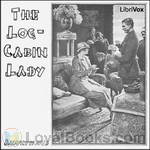 The Log-Cabin Lady
The Log-Cabin Lady
'The story of The Log-Cabin Lady is one of the annals of America. It is a moving record of the conquest of self-consciousness and fear through mastery of manners and customs. It has been written by one who has not sacrificed the strength and honesty of her pioneer girlhood, but who added to these qualities that graciousness and charm which have given her distinction on two continents.'(from the introduction) | |
By: Anonymous | |
|---|---|
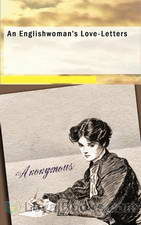 An Englishwoman's Love-Letters
An Englishwoman's Love-Letters
It need hardly be said that the woman by whom these letter were written had no thought that they would be read by anyone but the person to whom they were addressed. But a request, conveyed under circumstances which the writer herself would have regarded as all-commanding, urges that they should now be given to the world; and, so far as is possible with a due regard to the claims of privacy, what is here printed presents the letters as they were first written in their complete form and sequence. From book explaination | |
 Shri Dnyaneshwar - A Sketch Of His Life And Teachings
Shri Dnyaneshwar - A Sketch Of His Life And Teachings
An overview of the life of Shri Dnyaneshwar and his devoted family. Dnyaneshwar was a 13th-century Indian poet and yogin. He commentated the Bhagavad Gita in a timeless manner while in his teens, and wrote an original book of verse. He was an inspirational speaker with many followers. - Summary by Czandra | |
By: Anthony Trollope (1815-1882) | |
|---|---|
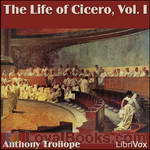 The Life of Cicero
The Life of Cicero
Marcus Tullius Cicero (106-43BC) was an orator, statesman, philosopher and prolific correspondent, who rose as a ‘new man’ in Rome in the turbulent last years of its republican government. Anthony Trollope, best known as a novelist, admired Cicero greatly and wrote this biography late in life in order to argue his virtues against authors who had granted him literary greatness but questioned his strength as a politician and as a man. He takes a personal approach, affording us an insight into his own mind and times as well as those of his subject... | |
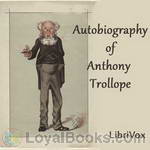 Autobiography of Anthony Trollope
Autobiography of Anthony Trollope
Anthony Trollope's autobiography will delight you whether or not you've read (or listened to) any of his many works. His honest if self-deprecating tone is at times hilarious and at times piteously moving. His detailed descriptions of his writing process and his philosophy of writing as work rather than art are fascinating. Fans of Trollope will enjoy learning the man's perceptions of his novels' shortcomings and triumphs. Anyone will appreciate learning about his years devoted to churning out literature for profit while working full time with the post office. | |
By: Arabella M. Willson | |
|---|---|
 Lives of the Three Mrs. Judsons
Lives of the Three Mrs. Judsons
This book follows the three amazing stories of Adoniram Judson's wives, Ann, Sarah, and Emily. Each wife went through incredible hardships, but each hardship only proved to make them strong women of faith, who despite all difficulties and illnesses, selflessly gave their strength to the sick and needy. Ann Judson followed Her husband from prison to prison, bribing guards so that she could see him and make his condition a little better. They sacrificed lives of ease, with loving families and friends... | |
By: Archibald Grimké (1849-1930) | |
|---|---|
 William Lloyd Garrison, the Abolitionist
William Lloyd Garrison, the Abolitionist
"THE author of this volume desires . . . to say . . . that it is his earnest hope that this record of a hero may be an aid to brave and true living in the Republic, so that the problems knocking at its door for solution may find the heads, the hands, and the hearts equal to the performance of the duties imposed by them upon the men and women of this generation. William Lloyd Garrison was brave and true. Bravery and truth were the secret of his marvelous career and achievements. May his countrymen and countrywomen imitate his example and be brave and true, not alone in emergent moments, but in everyday things as well." | |
By: Archibald Primrose (1847-1929) | |
|---|---|
 Pitt
Pitt
Archibald Primrose, 5th Earl of Rosebery, liberal prime minister , wrote this short biography of William Pitt, the Younger , the controversial young prime minister who led Great Britain during the terrible trial of the Napoleonic Wars. Lord Rosebery writes: "From the dead eighteenth century his figure still faces us with a majesty of loneliness and courage. There may have been men both abler and greater than he, though it is not easy to cite them; but in all history there is no more patriotic spirit, none more intrepid, and none more pure." | |
By: Arthur Hassall (1853-1930) | |
|---|---|
 Mazarin
Mazarin
Guilio Raimondo , Richelieu's designated successor as chief minister of France, was a master of diplomacy. Though a cardinal, he was not a priest and was probably secretly married to the Queen-Mother, Anne of Austria. Together they ruled France, facing the great rebellion known as the Fronde, and with the help of the military genius of Turenne, prevailed over the armies of Spain, Austria, and the traitorous Grand Condé. Arthur Hassall writes of Mazarin that by the time of his death in 1661 he had, through "patience, perseverance, and sagacity," fulfilled Richelieu's foreign policy and made the twenty-one year-old Louis XIV the absolute monarch of Europe's greatest power. | |
By: Arthur T. Pierson (1837-1911) | |
|---|---|
 George Müller of Bristol
George Müller of Bristol
George Muller was a great hero of faith. His greatest aim was to demonstrate that God answers prayer and can be trusted for every minute detail of life. Spending countless hours asking God to provide his needs, he only relied upon God. God called him to care for orphans and he conducted his orphanage in the same way, on faith alone. When a certain need was apparent, they would immediately go to God in prayer. In this dynamic dependance on God, He always proved faithful. He also established over a hundred schools, educating over a hundred thousand people! His example of absolute dependence on God stands in the gap of history to declare that God is enough, and He is faithful! | |
By: Asser, Bishop of Sherborne | |
|---|---|
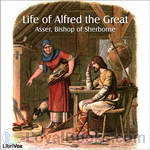 Life of Alfred the Great
Life of Alfred the Great
A life of King Alfred of England originally composed in Latin, possibly sometime around 888 A.D. by the Monk and Bishop Asser, although some scholars contend that the work was actually composed much later by an unknown hand. | |
By: Athanasius of Alexandria | |
|---|---|
 Life of Anthony (Version 2)
Life of Anthony (Version 2)
The Life Of St. Anthony the Great. | |
By: August Strindberg (1849-1912) | |
|---|---|
 Growth of a Soul
Growth of a Soul
Johan August Strindberg was a Swedish playwright who has had many of his works read into Librivox by volunteers. From his earliest work, Strindberg developed forms of dramatic action, language, and visual composition so innovative that many were to become technically possible to stage only with the advent of film. He is considered the "father" of modern Swedish literature. The Growth of a Soul is Strindberg's own literary autobiography and recreation of the spirit of the times at Upsala University and his attempts to become a literary artist... | |
By: Augustine Berthe | |
|---|---|
 Garcia Moreno, President of Ecuador 1821-1875
Garcia Moreno, President of Ecuador 1821-1875
Gabriel Gregorio Fernando José María García y Moreno y Morán de Buitrón (1821–1875) was an Ecuadorian politician who twice served as President of Ecuador (1859-1865 and 1869-1875) and was assassinated during his second term, after being elected to a third term. He is noted for his conservatism, Catholic religious perspective and rivalry with liberal strongman Eloy Alfaro. Under his administration, Ecuador became a leader in science and higher education within Latin America. In addition to... | |
By: Austin Craig | |
|---|---|
 Lineage, Life and Labors of Jose Rizal
Lineage, Life and Labors of Jose Rizal
LINEAGE LIFE AND LABORS of JOSE RIZAL PHILIPPINE PATRIOTBY AUSTIN CRAIGINTRODUCTION In writing a biography, the author, if he be discriminating, selects, with great care, the salient features of the life story of the one whom he deems worthy of being portrayed as a person possessed of preeminent qualities that make for a character and greatness. Indeed to write biography at all, one should have that nice sense of proportion that makes him instinctively seize upon only those points that do advance his theme... | |
By: Beazley | |
|---|---|
 Prince Henry the Navigator
Prince Henry the Navigator
PRINCE HENRY THE NAVIGATORBy Evelyn Abbot, M.A.INTRODUCTION.The Greek And Arabic Ideas Of The World, As The Chief Inheritance Of The Christian Middle Ages In Geographical Knowledge. Arabic science constitutes one of the main links between the older learned world of the Greeks and Latins and the Europe of Henry the Navigator and of the Renaissance. In geography it adopted in the main the results of Ptolemy and Strabo; and many of the Moslem travellers and writers gained some additional hints from Indian, Persian, and Chinese knowledge; but, however much of fact they added to Greek cartography, they did not venture to correct its postulates... | |
By: Bella Duffy (1845-1926) | |
|---|---|
 Madame de Staël
Madame de Staël
Madame Germaine de Staël was the daughter of the Swiss banker and statesman, Jacques Necker. Her mother hosted a popular Paris salon where intellectuals gathered, many of whom contributed to the education of the brilliant girl. After his fall from political power in 1781, her still-wealthy father was able to marry Germaine to Baron Erik Magnus Staël von Holstein, but the couple separated in 1797. A successful novelist, Madame de Staël was a fervent defender of J.J. Rousseau and of the ideals of the French Revolution... | |
By: Benjamin F. Hasson (c. 1840-) | |
|---|---|
 Escape From The Confederacy
Escape From The Confederacy
Benjamin F Hasson was a Union officer in the Civil War of the United States. After being captured by the Confederacy, he escaped from a prison train taking prisoners to the infamous Andersonville prison. The short book points up Hasson’s ingenuity in overcoming obstacles to his flight to Union lines but also shows an insight into the lives of Southern blacks, both slave and free. This oral version omits the last section of his book, which is a list of men captured from his regiment and their fates. ( david wales) | |
By: Benjamin Franklin (1706-1790) | |
|---|---|
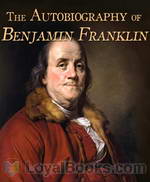 The Autobiography of Benjamin Franklin
The Autobiography of Benjamin Franklin
Inventor, author, printer, scientist, politician, diplomat—all these terms do not even begin to fully describe the amazing and multitalented, Benjamin Franklin who was of course also one of the Founding Fathers of America. At the age of 75, in 1771 he began work on what he called his Memoirs. He was still working on it when he died in 1790 and it was published posthumously, entitled An Autobiography of Benjamin Franklin. The book had a complicated and controversial publication history. Strangely enough, the first volume only was first published in French, in Paris in 1791... | |
By: Benjamin Griffith Brawley (1882-1939) | |
|---|---|
 Women of Achievement
Women of Achievement
This volume, published in 1919 by the American Women's Baptist Home Mission Society, opens with an introduction spelling out the important work done by African American women. It speaks both to the "invisible work" of as mothers and wives, and the work done outside the homes in all sorts of industries, as well as in medicine, education, and arts. In addition, it contains short biographies of five brave, inspiring women. - Summary by kathrinee | |
By: Benjamin Harris (1781-1858) | |
|---|---|
 The Recollections of Rifleman Harris
The Recollections of Rifleman Harris
The recollections of a British infantryman who served in the British army during the Napoleonic Wars. | |
By: Benvenuto Cellini ((1500-1571)) | |
|---|---|
 The Autobiography of Benvenuto Cellini
The Autobiography of Benvenuto Cellini
Cellini’s autobiographical memoirs, which he began writing in Florence in 1558, give a detailed account of his singular career, as well as his loves, hatreds, passions, and delights, written in an energetic, direct, and racy style. They show a great self-regard and self-assertion, sometimes running into extravagances which are impossible to credit. He even writes in a complacent way of how he contemplated his murders before carrying them out. He writes of his time in Paris: Parts of his tale recount... | |
By: Beth Ellis (1874-1913) | |
|---|---|
 English Girl's First Impressions of Burmah
English Girl's First Impressions of Burmah
An English Girl's First Impressions of Burmah, by Beth Ellis, is a well-edited, turn-of-the-century journal documenting a young woman’s visit to Burma. The account documents her ocean voyage to Rangoon, and her stay in a small, jungle-embedded, European community in Remyo. The author, who travelled to Asia alone to visit her brother, is quick to laugh at her own exaggerated fears. She gives us a glimpse into the less-than-glamorous lives to Myanmar’s British occupiers. The book was published in 1899, just thirteen years after the conclusion of the third Anglo-Burmese war, when Britain took formal control of Myanmar and made it a province of India. | |
By: Booker T. Washington (1856-1915) | |
|---|---|
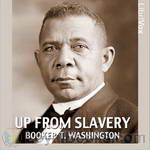 Up From Slavery
Up From Slavery
Up From Slavery is the 1901 autobiography of Booker T. Washington detailing his slow and steady rise from a slave child during the Civil War, to the difficulties and obstacles he overcame to get an education at the new Hampton University, to his work establishing vocational schools—most notably the Tuskegee Institute in Alabama—to help black people and other disadvantaged minorities learn useful, marketable skills and work to pull themselves, as a race, up by the bootstraps. He reflects on the generosity of both teachers and philanthropists who helped in educating blacks and native Americans... | |
 My Larger Education
My Larger Education
This is a sequel to Washington's first autobiographical book, Up From Slavery, which depicted his early life. He says "This book contains answers to the questions I have frequently been asked as to how I have worked out for myself the educational methods which we are now using at Tuskegee; and, finally, to illustrate, for the benefit of the members of my own race, some of the ways in which a people who are struggling upward may turn disadvantages into opportunities." "The fact that I was born a Negro,... | |
 Up from Slavery: An Autobiography (version 3)
Up from Slavery: An Autobiography (version 3)
Up from Slavery is the autobiography of American educator Booker T. Washington, describing his personal path up from the position of a slave child during the Civil War to his work at founding schools to help children from black or other disadvantaged groups learn skills that would give them the chance to work to pull themselves up by the bootstraps. | |
 Story of My Life and Work
Story of My Life and Work
The legacy of Booker T. Washington has inspired leaders for racial equality for over a century. He rose from a slave family to be adviser to presidents. As an educator founded the Tuskegee Institute and championed higher education to those who were denied such based on race. Booker T. Washington gives us this autobiography of his life and work. - Summary by Larry Wilson | |
By: Bram Stoker (1847-1912) | |
|---|---|
 Famous Impostors
Famous Impostors
Aliases. Fraudsters. Confidence tricksters. People pretending to be what they are not, for financial, political or personal gain. Fiction is filled with them to entertain us; but would not be anywhere near as believable if such people had not, in reality, existed since time immemorial. In this work, the famous Bram Stoker throws light on just a few such people, who have tricked their way into the annals of history. - Summary by Lynne Thompson | |
By: Burton Egbert Stevenson (1872-1962) | |
|---|---|
 American Men of Action
American Men of Action
In this book, Burton Egbert Stevenson writes a brief biography of some of the most noteworthy men in American history. He begins at the very beginning of the history of America with Christopher Columbus and proceeds forward with the story of people who made America what it is today by their respective vocations. It is interesting to note that the vast majority of the subjects started in poverty and excelled financially and in stature.He makes something that could be very dull, a very readable and enjoyable book. | |
 American Men of Mind
American Men of Mind
“American Men of Mind” is a collection of short biographies of men of note in various disciplines. It is an absorbing collection of short biographies of men who made a difference in American history; most beginning life in very humble circumstances, both in the United States and in foreign countries. Although “men” is mentioned in the title, Mr. Stevenson also relates biographies of several women.This is a most interesting read.(William Tomcho) | |
By: C. H. Forbes-Lindsay | |
|---|---|
 Daniel Boone, Backwoodsman
Daniel Boone, Backwoodsman
Daniel Boone is celebrated in history and legend as one of the foremost pioneers who opened up the wilderness of Kentucky. Famed for his skills as a hunter, he was once captured and adopted by the Shawnee tribe from which he ultimately escaped. He was active in the militia and fought in several battles of the American Revolution. In later life he became a politician, being elected to Virginia state assembly, and land speculator, eventually settling in Missouri. This biography is written for youth in a lively and engaging style dramatizing many of the events of Boone’s adventures, from his youth to his final days. - Summary by Larry Wilson | |
By: Calista McCabe Courtenay | |
|---|---|
 George Washington
George Washington
In this biography for young people, Calista McCabe Courtenay takes the reader from George Washington the surveyor to his early military career, first as a colonel in the Virgina militia and then as a member of General Braddock'a staff during the French and Indian War. He later commanded the Virginia forces before joining the First Continental Congress. Much of the book is devoted to his campaigns during the American Revolution. At the end, we see him as President for two terms. | |
By: Carl E. Koppenhaver (1915-2000) | |
|---|---|
 Martin Luther
Martin Luther
This short, engaging volume summarizes the life of a priest who, intending to spark a lively academic debate by nailing 95 theses on a church door, unwittingly sets the continent aflame with the 1517 Reformation of the Catholic Church. - Summary by Elyse J. Wood | |
By: Carlton McCarthy (1847-1936) | |
|---|---|
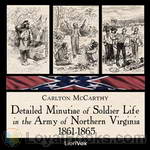 Detailed Minutiae of Soldier Life in the Army of Northern Virginia, 1861-1865
Detailed Minutiae of Soldier Life in the Army of Northern Virginia, 1861-1865
The author, who fought as a private in the Army of Northern Virginia during the Civil War, describes the Confederate soldier’s daily struggles with hunger, illness, fear, and the perils of combat; as well as his pride of service, love of comrades, and courage in the face of overwhelming odds | |
By: Casper S. Yost (1863-1941) | |
|---|---|
 Patience Worth
Patience Worth
Patience Worth is an examination of the communications between a seventeenth century woman and a certain Mrs. Curran of St. Louis, in 1913. Contact with the spirit world or parlor trick? If the latter, it was well done: the quick-witted repartee appeared unrehearsed, the language was authentic, the references to English nature and life accurate, although Mrs. Curran had never visited England. Mrs. Curran, herself, was a smart, quick-witted socialite of good repute, unlikely to have been a fraudster... | |
By: Catharine Parr Traill (1802-1899) | |
|---|---|
 The Backwoods of Canada
The Backwoods of Canada
The writer is as earnest in recommending ladies who belong to the higher class of settlers to cultivate all the mental resources of a superior education, as she is to induce them to discard all irrational and artificial wants and mere useless pursuits. She would willingly direct their attention to the natural history and botany of this new country, in which they will find a never-failing source of amusement and instruction, at once enlightening and elevating the mind, and serving to fill up the void left by the absence of those lighter feminine accomplishments, the practice of which are necessarily superseded by imperative domestic duties... | |
By: Catherine of Genoa | |
|---|---|
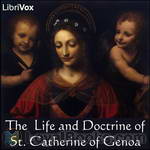 The Life and Doctrine of St. Catherine of Genoa
The Life and Doctrine of St. Catherine of Genoa
Saint Catherine of Genoa (Caterina Fieschi Adorno, born Genoa 1447 – 15 September 1510) is an Italian Roman Catholic saint and mystic, admired for her work among the sick and the poor. She was a member of the noble Fieschi family, and spent most of her life and her means serving the sick, especially during the plague which ravaged Genoa in 1497 and 1501. She died in that city in 1510.In 1551, 41 years after her death, a book about her life and teaching was published, entitled Libro de la vita mirabile et dottrina santa de la Beata Caterinetta de Genoa... | |
By: Chalkley J. Hambleton | |
|---|---|
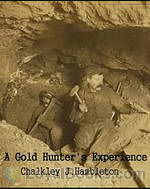 A Gold Hunter's Experience
A Gold Hunter's Experience
“Early in the summer of 1860, I had an attack of gold fever. In Chicago, the conditions for such a malady were all favorable. Since the panic of 1857 there had been three years of general depression, money was scarce, there was little activity in business, the outlook was discouraging, and I, like hundreds of others, felt blue.” Thus Chalkley J. Hambleton begins his pithy and engrossing tale of participation in the Pike’s Peak gold rush. Four men in partnership hauled 24 tons of mining equipment by ox cart across the Great Plains from St... | |
By: Charles A. Conant (1861-1915) | |
|---|---|
 Alexander Hamilton
Alexander Hamilton
Alexander Hamilton was a significant figure in the political and economic development of the early United States. He served in the American Revolutionary War and became an aide to General George Washington. He was one of the authors (along with John Jay and James Madison) of a series of essays know as The Federalist Papers, which were written in support of the ratification of the proposed Constitution. Scholars and others still refer to these essays to this day for interpretation of the Constitution... | |
By: Charles A. Siringo (1855-1928) | |
|---|---|
 Texas Cowboy; Or Fifteen Years on the Hurricane Deck of a Spanish Pony
Texas Cowboy; Or Fifteen Years on the Hurricane Deck of a Spanish Pony
Charles A. Siringo was an American lawman, detective, and agent for the Pinkerton National Detective Agency during the late 19th century and early 20th century…. After taking part in several cattle drives, Siringo stopped herding to settle down, get married (1884), and open a merchant business in Caldwell, Kansas. He began writing a book, entitled A Texas Cowboy; Or Fifteen Years on the Hurricane Deck of a Spanish Pony. A year later, it was published, to wide acclaim, and became one of the first true looks into life as a cowboy written by someone who had actually lived the life. | |
By: Charles Alexander Eastman (1858-1939) | |
|---|---|
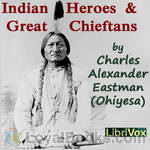 Indian Heroes and Great Chieftans
Indian Heroes and Great Chieftans
EVERY age, every race, has its leaders and heroes. There were over sixty distinct tribes of Indians on this continent, each of which boasted its notable men. The names and deeds of some of these men will live in American history, yet in the true sense they are unknown, because misunderstood. I should like to present some of the greatest chiefs of modern times in the light of the native character and ideals, believing that the American people will gladly do them tardy justice. | |
By: Charles Alexander Eastman (1858-1939) | |
|---|---|
 From the Deep Woods to Civilization: Chapters in the Autobiography of an Indian
From the Deep Woods to Civilization: Chapters in the Autobiography of an Indian
From the Deep Woods to Civilization is the sequel to Indian Boyhood. Charles Eastman (Ohiyesa) gives his account of what it was like to transition from the ways of his Inidan life to that of the white man. His father, long thought dead, had converted to Christianity and wished the same for his son as well as receiving education in the white man's school. At the age of 15, Ohiyesa must learn to balance the old familiar life of the American Indian with that of the new in the world of the white man, one of his first acts being the cutting of his long hair and attending school... | |
By: Charles Bradlaugh (1833-1891) | |
|---|---|
 Ancient and Modern Celebrated Freethinkers
Ancient and Modern Celebrated Freethinkers
| |
By: Charles Darwin (1809-1882) | |
|---|---|
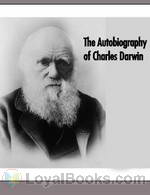 The Autobiography of Charles Darwin
The Autobiography of Charles Darwin
The Autobiography of Charles Darwin is the autobiography of the British naturalist Charles Darwin which was published in 1887, five years after his death. Darwin wrote the book, which he entitled Recollections of the Development of my Mind and Character, for his family. He states that he started writing it on about May 28, 1876 and had finished it by August 3. The book was edited by Charles Darwin’s son Francis Darwin, who removed several passages about Darwin’s critical views of God and Christianity... | |
By: Charles Dudley Warner (1829-1900) | |
|---|---|
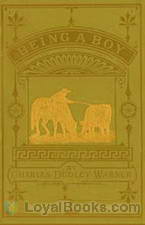 Being a Boy
Being a Boy
Warner's thoughtful and often humorous memoir of his life as a young farm-boy in Charlemont, Massachusetts. (Introduction by Mark Penfold) | |
By: Charles Edward Moberly (1820-1893) | |
|---|---|
 Early Tudors: Henry VII and Henry VIII
Early Tudors: Henry VII and Henry VIII
Following the chaos of the Wars of the Roses, the reigns of Henry VII and VIII were autocratic and centralized to an unprecedented degree. This slim volume by the British historian and educator, Charles Moberly, provides many interesting details about the reigns of these two monarchs. But the author also offers a clear picture of the European context in which they acted: the Reformation struggle, the rivalry between the King Francis I and Emperor Charles V, the influence of the Popes, and the struggle for Italy. | |
By: Charles Edward Stowe (1850-1934) | |
|---|---|
 Life of Harriet Beecher Stowe, Compiled from her Letters and Journals
Life of Harriet Beecher Stowe, Compiled from her Letters and Journals
Harriet Beecher Stowe , of Cincinnati, was the most famous female American author of her age, and is said to have touched off the American Civil War with her novel, Uncle Tom's Cabin , awakening the whole world to the harsh conditions of slavery. She wrote 30 other successful books depicting life in early America, plus collections of well written articles and travellogues, poems, hymns, and speeches on social issues. Harriet's father and all 7 of her brothers were ministers, her 5 sisters teachers and/or social activists, a whole family concerned with improving society... | |
By: Charles Ellms | |
|---|---|
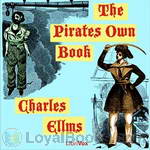 The Pirates Own Book
The Pirates Own Book
Authentic Narratives of the Most Celebrated Sea Robbers. | |
By: Charles F. Horne (1870-1942) | |
|---|---|
 Great Men and Famous Women, Vol. 1
Great Men and Famous Women, Vol. 1
Great Men and Famous Women is an 8-volume work by various authors containing “A series of pen and pencil sketches of the lives of more than 200 of the most prominent personages in History.” The set is edited by Charles F. Horne, a prolific American author who wrote mainly history. The focus of Volume 1 is “Soldiers and Sailors”. | |